Korean cuisine has healthy ingredients that add incredible flavor and numerous health benefits. These superfoods can easily elevate your everyday meals from probiotic-rich ferments to antioxidant-loaded greens. Moreover, many of these ingredients have been used in traditional Korean medicine for centuries. Let’s explore seven nutritional powerhouses and how to incorporate them into your diet.
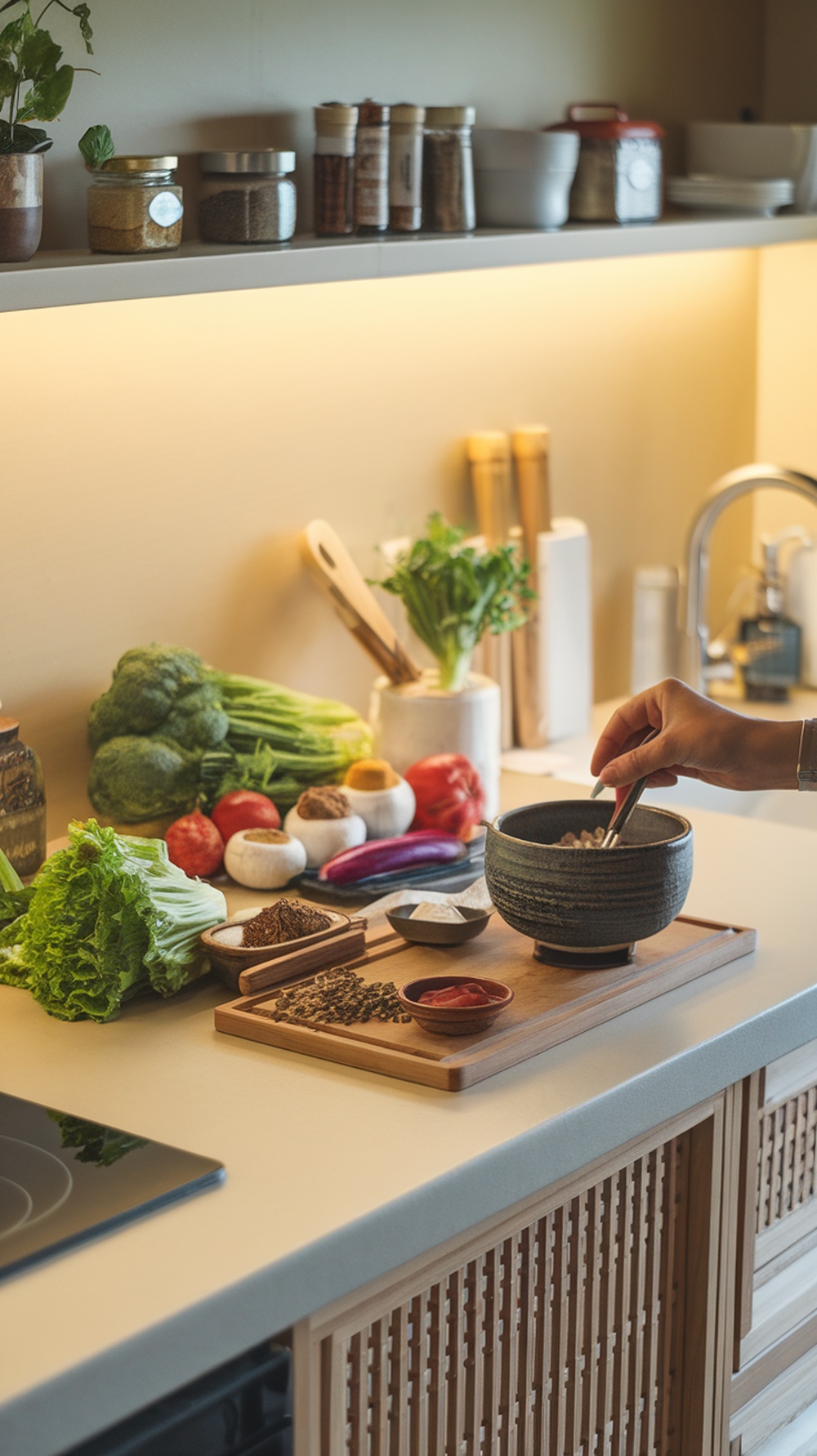
Korean Superfoods
Kimchi (Fermented Napa Cabbage & Radish)
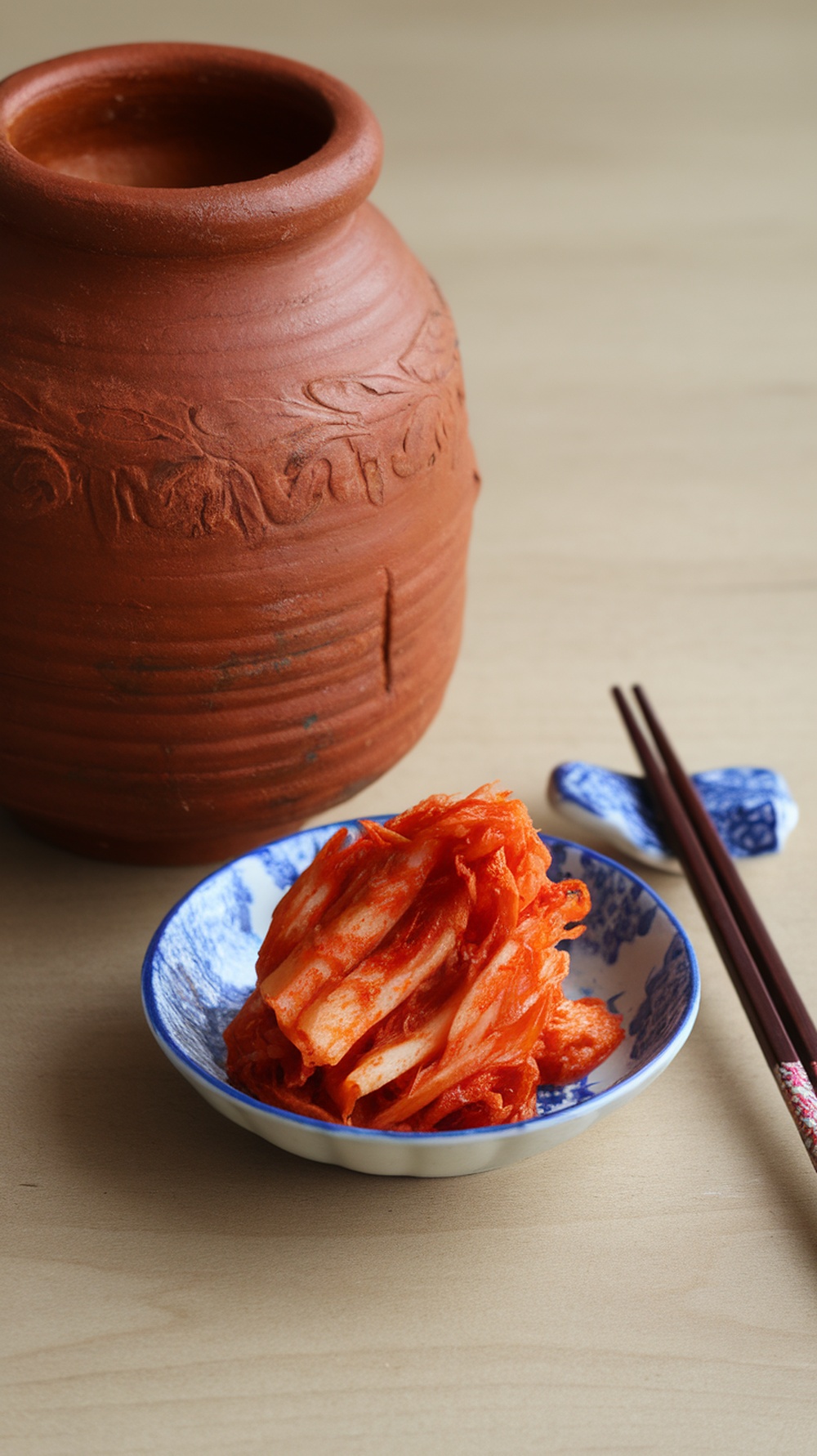
Kimchi is one of the most well-known healthy ingredients in Korean cuisine. Thanks to its fermentation process, it contains beneficial probiotics that support gut health and digestion. Additionally, it’s packed with vitamins A, C, and K, fiber, and antioxidants. For instance, the chili peppers in kimchi provide capsaicin, which may help boost metabolism.
Recipe
Ingredients:
- 1 napa cabbage (cut into quarters)
- ¼ cup sea salt
- 4 cups water
- 2 tbsp fish sauce (or soy sauce)
- 1 tbsp sugar
- 3 tbsp gochugaru (Korean chili flakes)
- 1 tbsp minced garlic
- 1 tsp grated ginger
- 2 green onions (chopped)
Instructions:
- Dissolve salt in water and soak cabbage for 2 hours.
- Rinse thoroughly and drain.
- Mix the remaining ingredients into a paste.
- Coat cabbage leaves with paste and pack into a jar.
- Ferment at room temperature for 1–3 days.
- Refrigerate and enjoy for up to 1 month.
Usage Ideas:
- As a side dish with rice and grilled meats
- In stews like kimchi jjigae for extra depth of flavor
- In fried rice for a tangy, spicy kick
Gochujang (Korean Red Chili Paste)
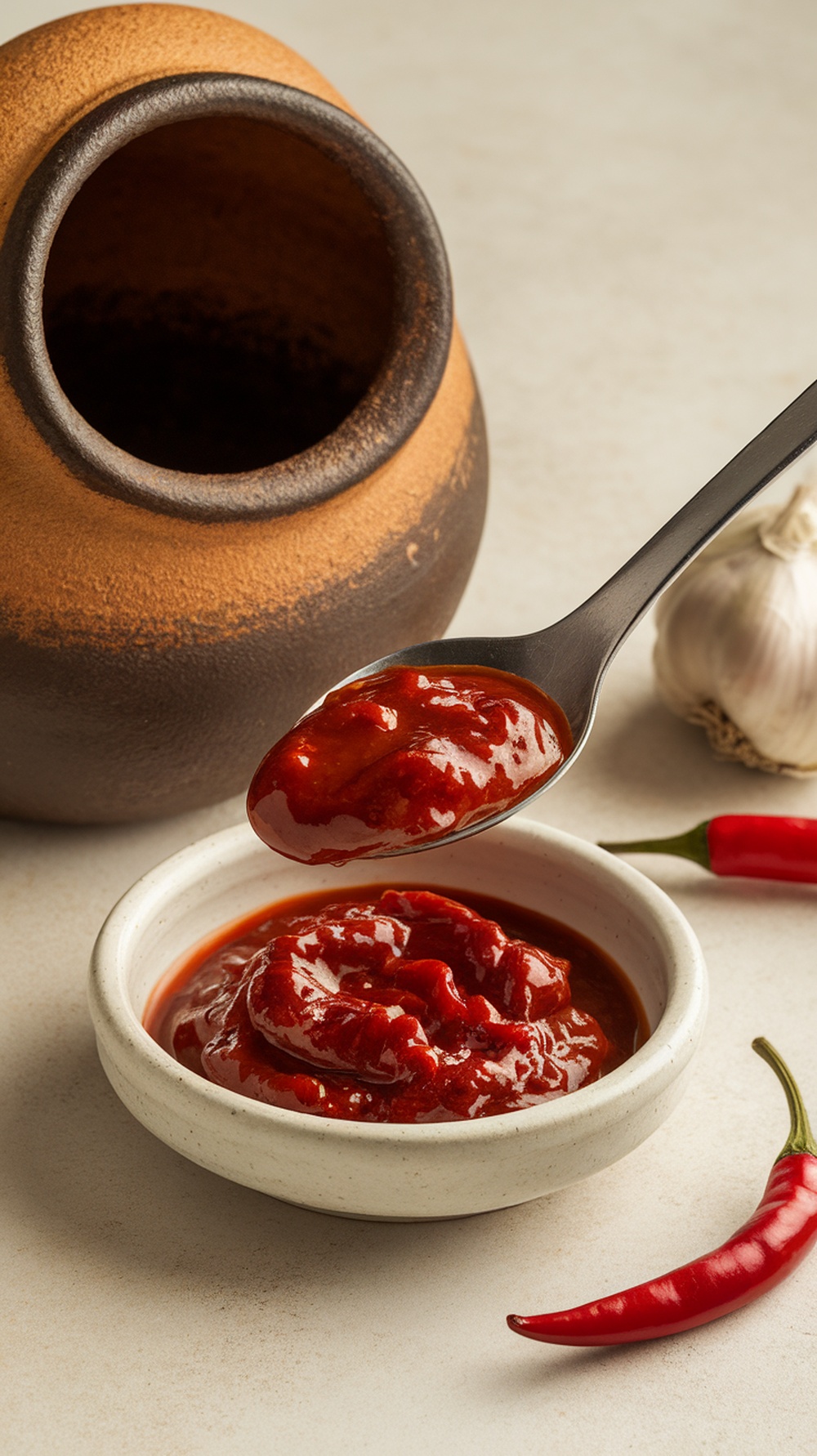
Gochujang is another healthy ingredient staple known for its unique spicy, sweet, and savory flavors. Because it’s fermented, it contains probiotics that promote gut health. Moreover, the red chili peppers in gochujang are rich in capsaicin, which may help with weight management. Not to mention, its deep umami flavor makes it a versatile addition to many dishes.
Recipe
Ingredients:
- 1 lb chicken breast (sliced)
- 2 tbsp gochujang
- 1 tbsp soy sauce
- 1 tbsp honey
- 1 tbsp sesame oil
- 2 cups mixed vegetables (bell peppers, carrots, onions)
Instructions:
- Marinate chicken in gochujang, soy sauce, and honey for 15 minutes.
- Heat sesame oil in a pan and stir-fry chicken until cooked.
- Add vegetables and cook until tender.
- Serve hot with rice.
Usage Ideas:
- As a marinade for meats or tofu
- In soups and stews for added depth
- Mixed into dressings for a spicy kick
Doenjang (Fermented Soybean Paste)
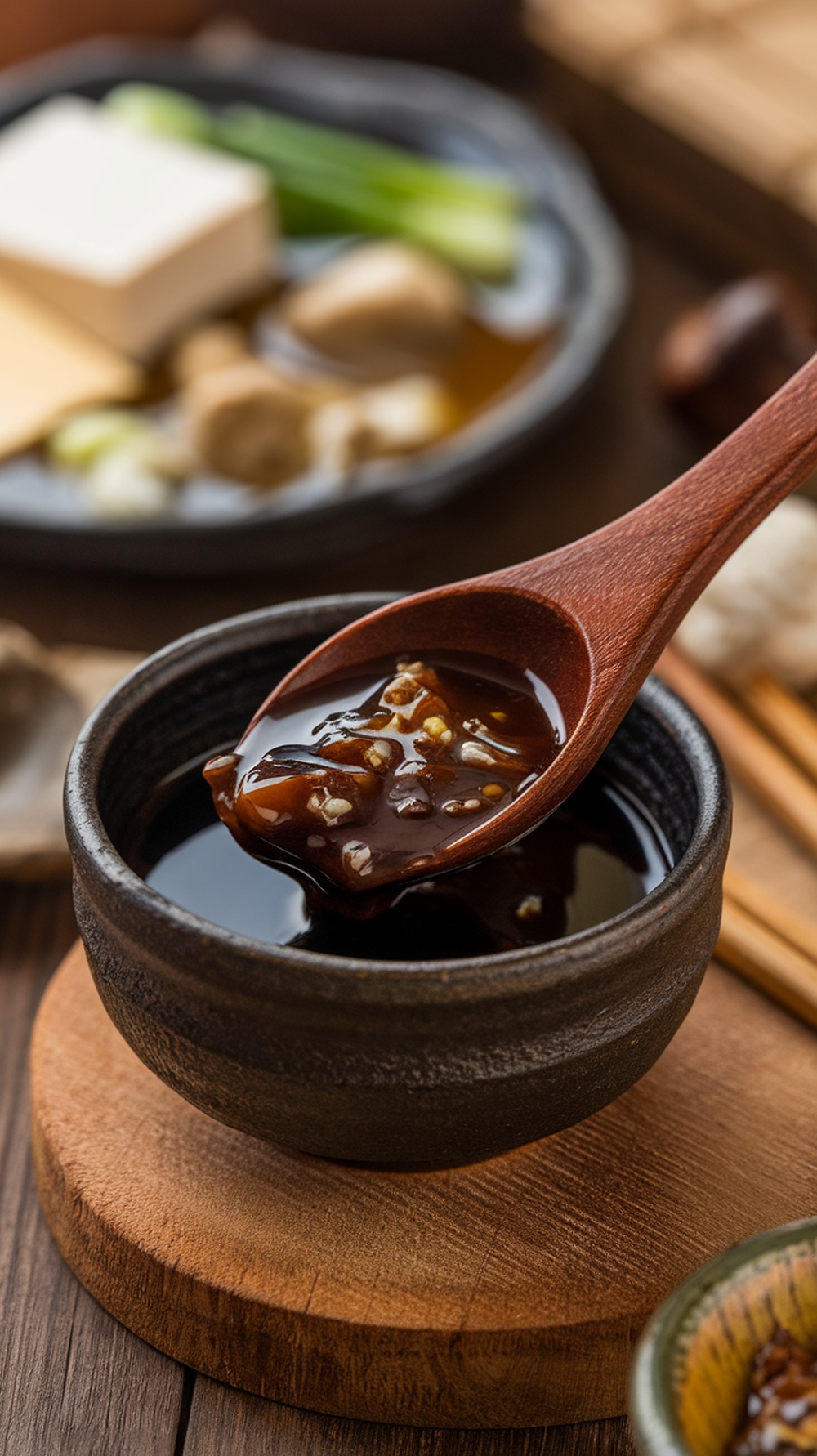
Doenjang is a fermented soybean paste that ranks high among healthy ingredients for its probiotic content. Due to its fermentation process, it’s rich in isoflavones, which may support heart health. It is a great source of plant-based protein and essential amino acids. Because of this, it makes a superb alternative to salt in many dishes.
Recipe
Ingredients:
- 2 tbsp doenjang
- 4 cups water
- ½ block tofu (cubed)
- ½ zucchini (sliced)
- 1 cup mushrooms
- 1 tbsp sesame oil
- 1 tsp minced garlic
Instructions:
- Whisk doenjang into water and bring to a boil.
- Add tofu, zucchini, and mushrooms.
- Simmer for 10 minutes.
- Stir in sesame oil and garlic before serving.
Usage Ideas:
- In stews like doenjang jjigae
- As a soup base for added umami
- Mixed into sauces for marinades
Ginseng (Korean Red Ginseng)
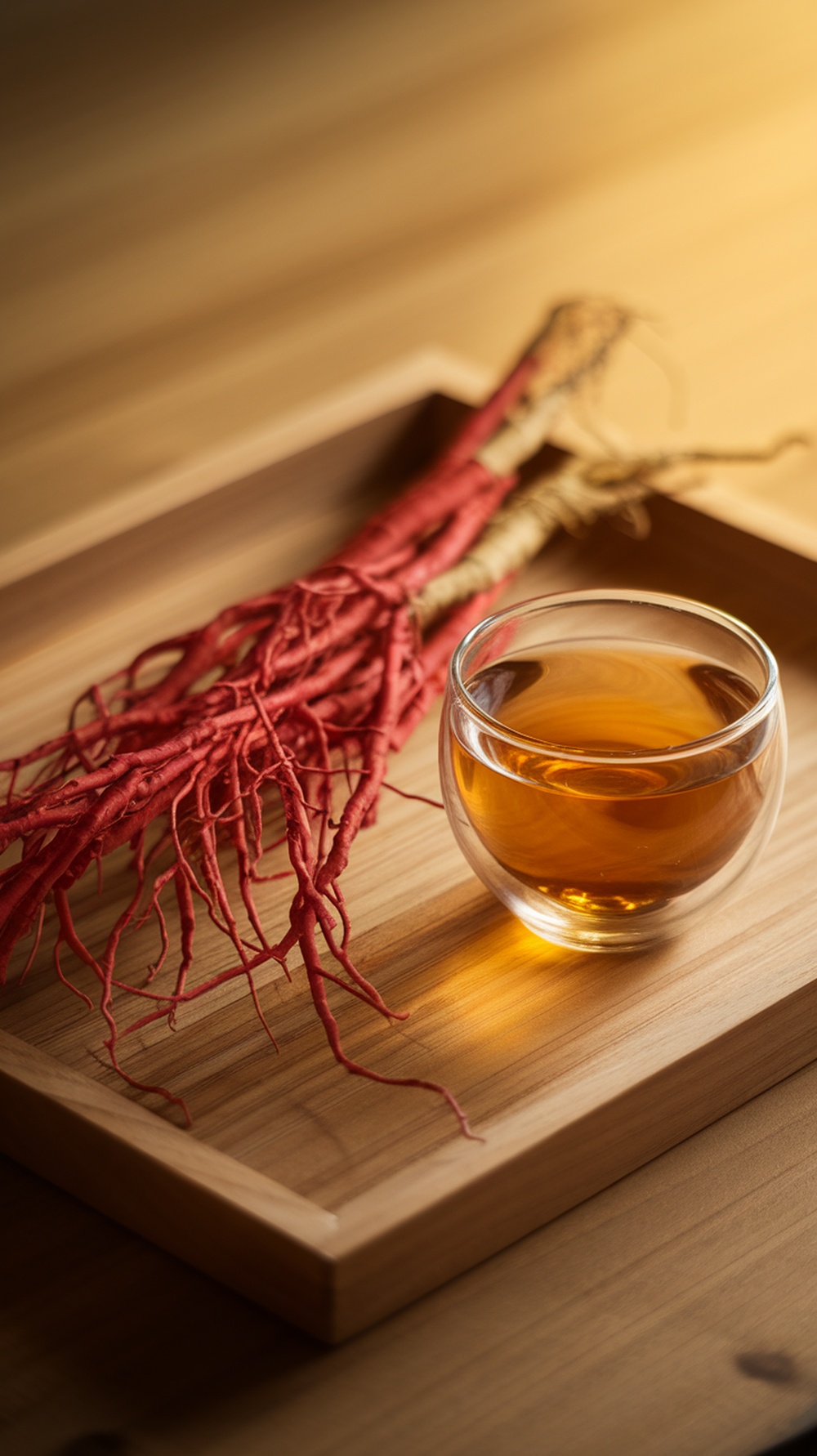
Korean ginseng is one of the most revered healthy ingredients in traditional medicine. Because of its adaptogenic properties, it may help reduce stress and boost energy levels. Furthermore, it contains compounds like ginsenosides, which have anti-inflammatory effects. As a result, it’s often used in teas and soups for its revitalizing benefits.
Recipe
Ingredients:
- 3–4 slices dried Korean ginseng
- 2 cups water
- Honey (optional)
Instructions:
- Simmer ginseng in water for 10 minutes.
- Strain and add honey to taste.
- Serve hot or chilled.
Usage Ideas:
- Tea for a natural energy boost
- In soups like samgyetang (ginseng chicken soup)
- In tonics for immune support
Perilla Leaves (Kkaennip)
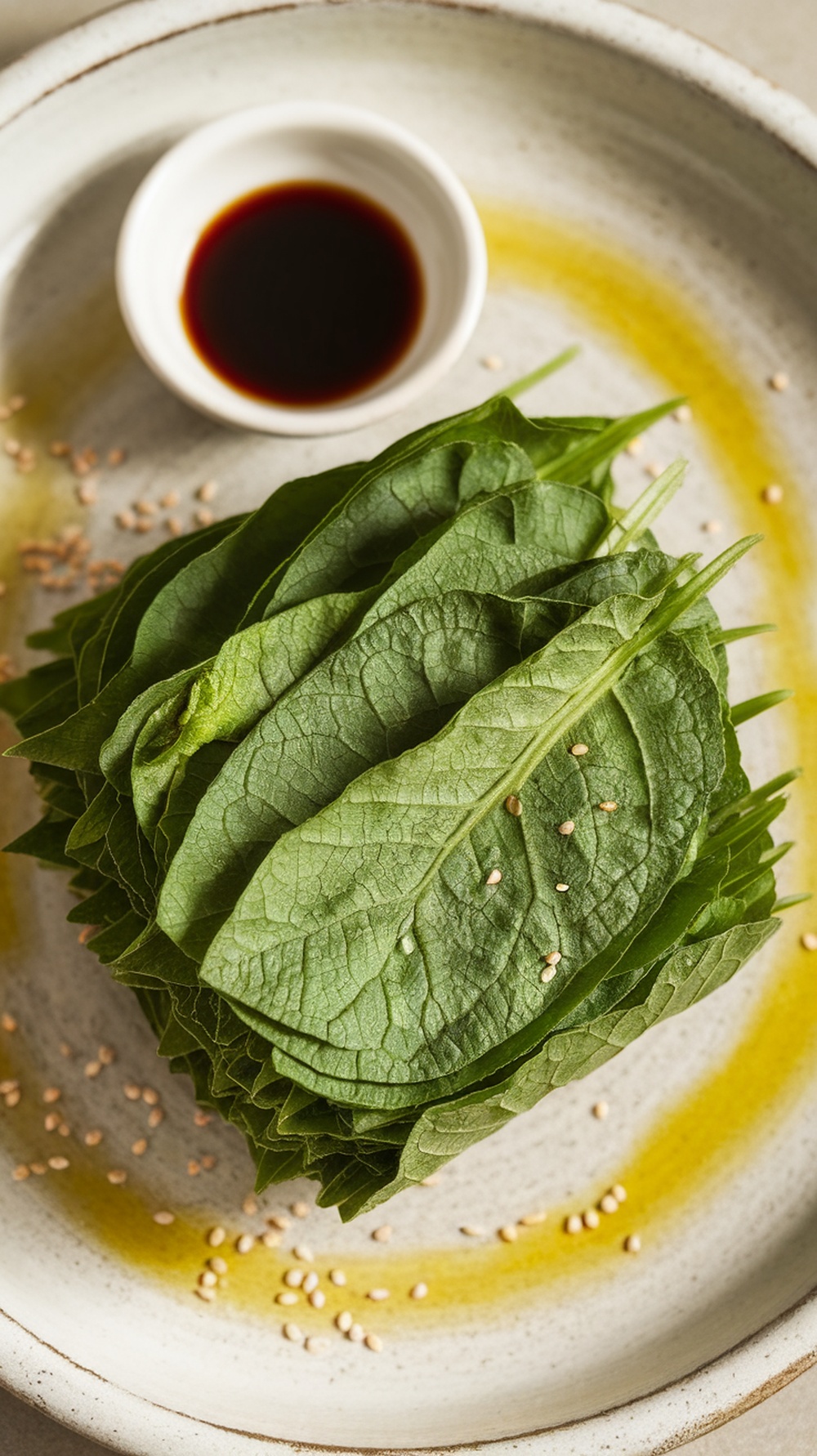
Perilla leaves are a lesser-known but powerful addition to healthy ingredients. Thanks to their high omega-3 content, they support brain and heart health. Additionally, they contain rosmarinic acid, which has anti-inflammatory properties. For this reason, they’re often used in wraps and salads.
Recipe
Ingredients:
- 10–12 perilla leaves
- 1 tbsp soy sauce
- 1 tsp vinegar
- ½ tsp sesame oil
- 1 tsp sesame seeds
Instructions:
- Stack and thinly slice leaves.
- Whisk together the dressing ingredients.
- Toss leaves with dressing and sesame seeds.
Usage Ideas:
- In wraps with grilled meat (ssam)
- As a salad with a light dressing
- Fried as tempura for a crispy snack
Seaweed (Gim & Miyeok)
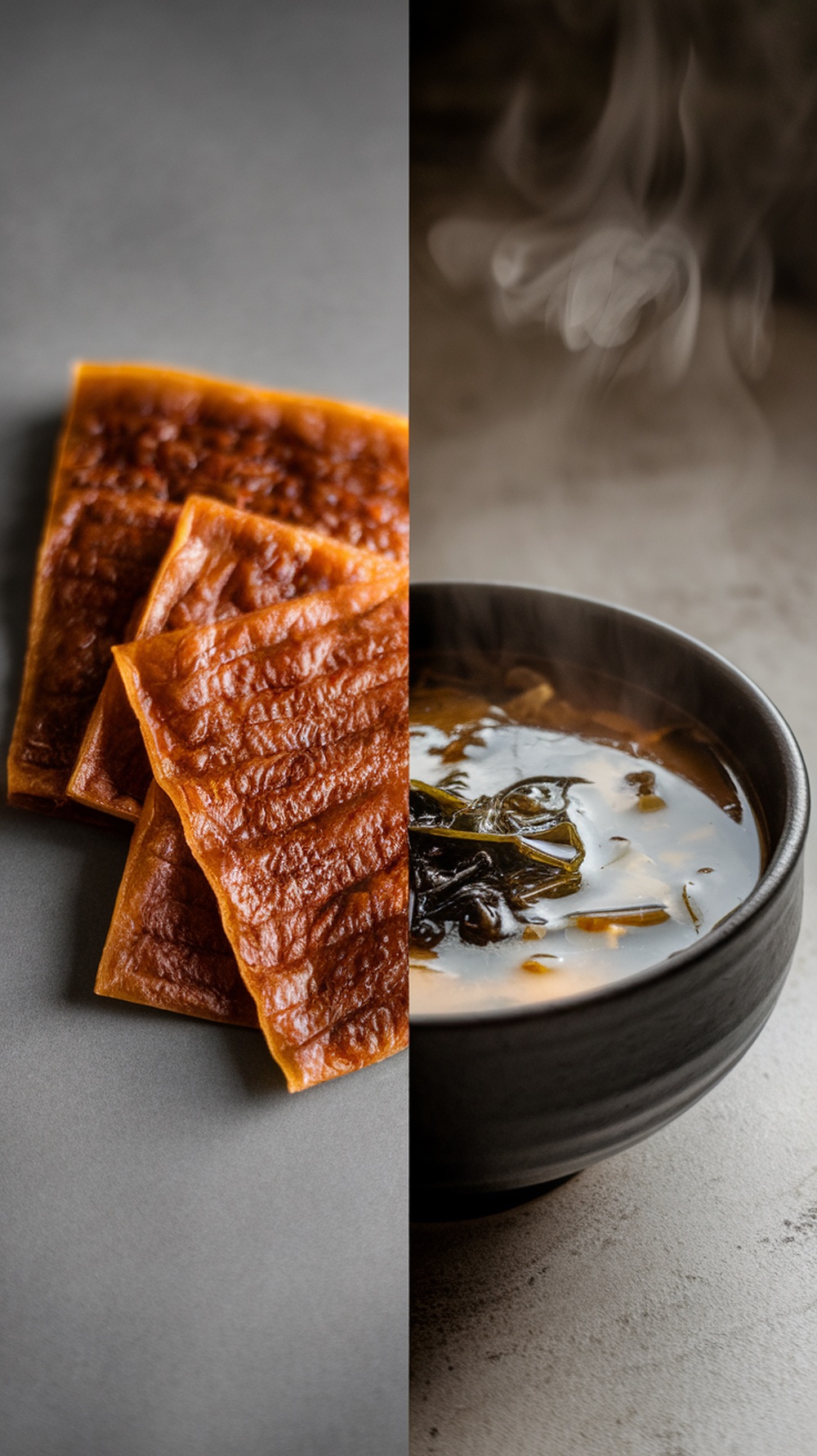
Seaweed is a nutrient-dense healthy ingredient loaded with minerals like iodine and iron. Because it’s rich in fiber, it supports digestion and may help regulate blood sugar. Moreover, its high antioxidant content makes it great for skin health. For this purpose, it’s often used in soups and snacks.
Recipe
Ingredients:
- 1 oz dried miyeok (seaweed)
- 4 cups broth
- ½ cup beef or tofu
- 1 tbsp sesame oil
- 1 tsp minced garlic
Instructions:
- Soak seaweed for 20 minutes, then rinse.
- Sauté beef/tofu in sesame oil with garlic.
- Add seaweed and broth and simmer for 15 minutes.
Usage Ideas:
- In soups like miyeok-guk
- As a snack (roasted gim)
- In salads for added texture
Black Garlic
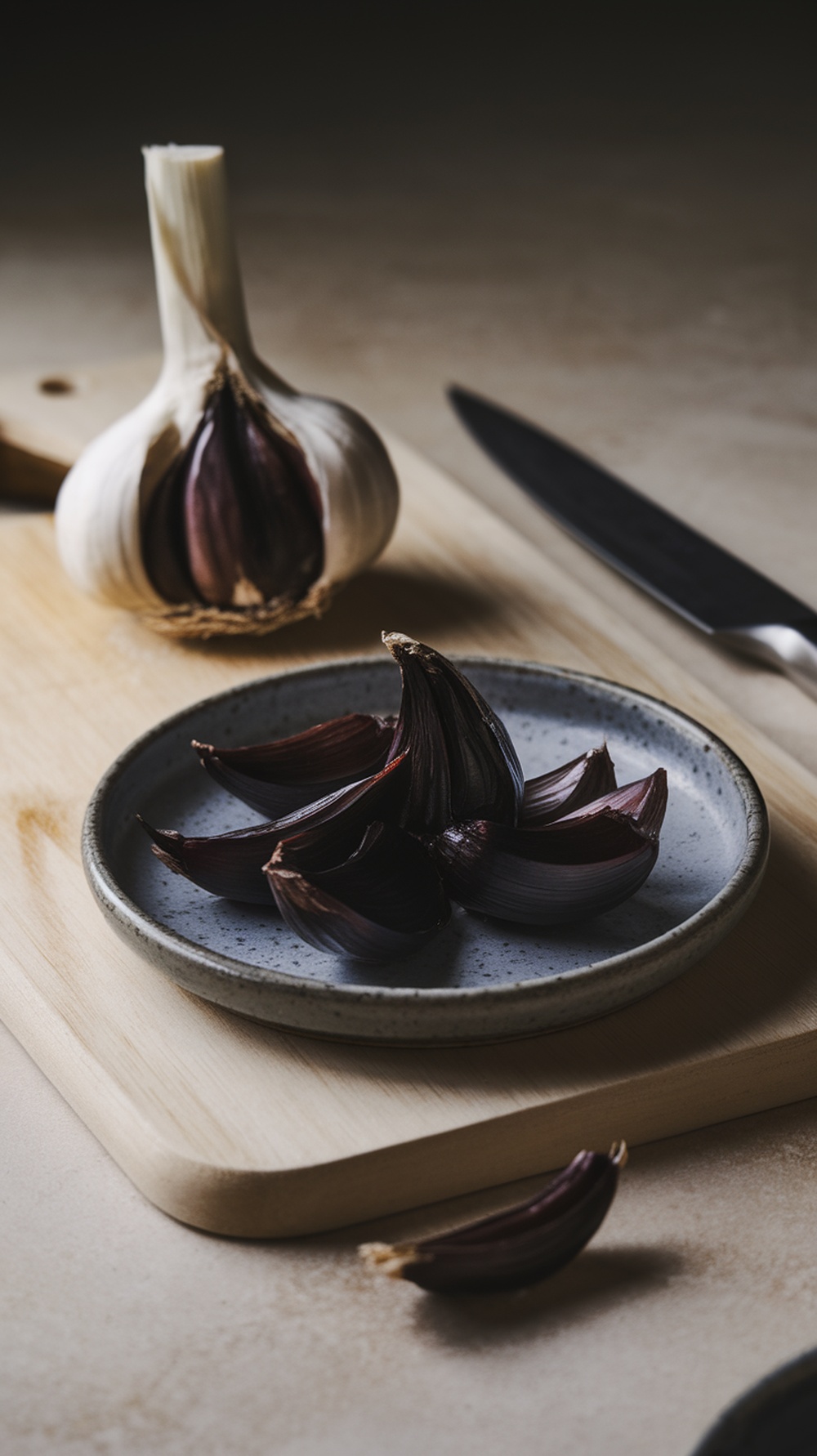
Black garlic is a unique, healthy ingredient with double the antioxidants of raw garlic. Since it’s fermented, it has a sweet, balsamic-like flavor without the sharpness. Additionally, it may support heart health and immunity. For this reason, it’s perfect for adding depth to dishes.
Recipe
Ingredients:
- 8 oz pasta
- 5 cloves black garlic (minced)
- 3 tbsp olive oil
- ¼ cup Parmesan
- Red pepper flakes (optional)
Instructions:
- Cook pasta al dente; reserve ½ cup water.
- Sauté garlic in olive oil for 1 minute.
- Toss pasta with garlic oil, adding reserved water as needed.
- Top with Parmesan and pepper flakes.
Usage Ideas:
- In pasta dishes for rich flavor
- Spread on toast with butter
- In dressings for a gourmet touch
Final Tips for Using Korean Superfoods
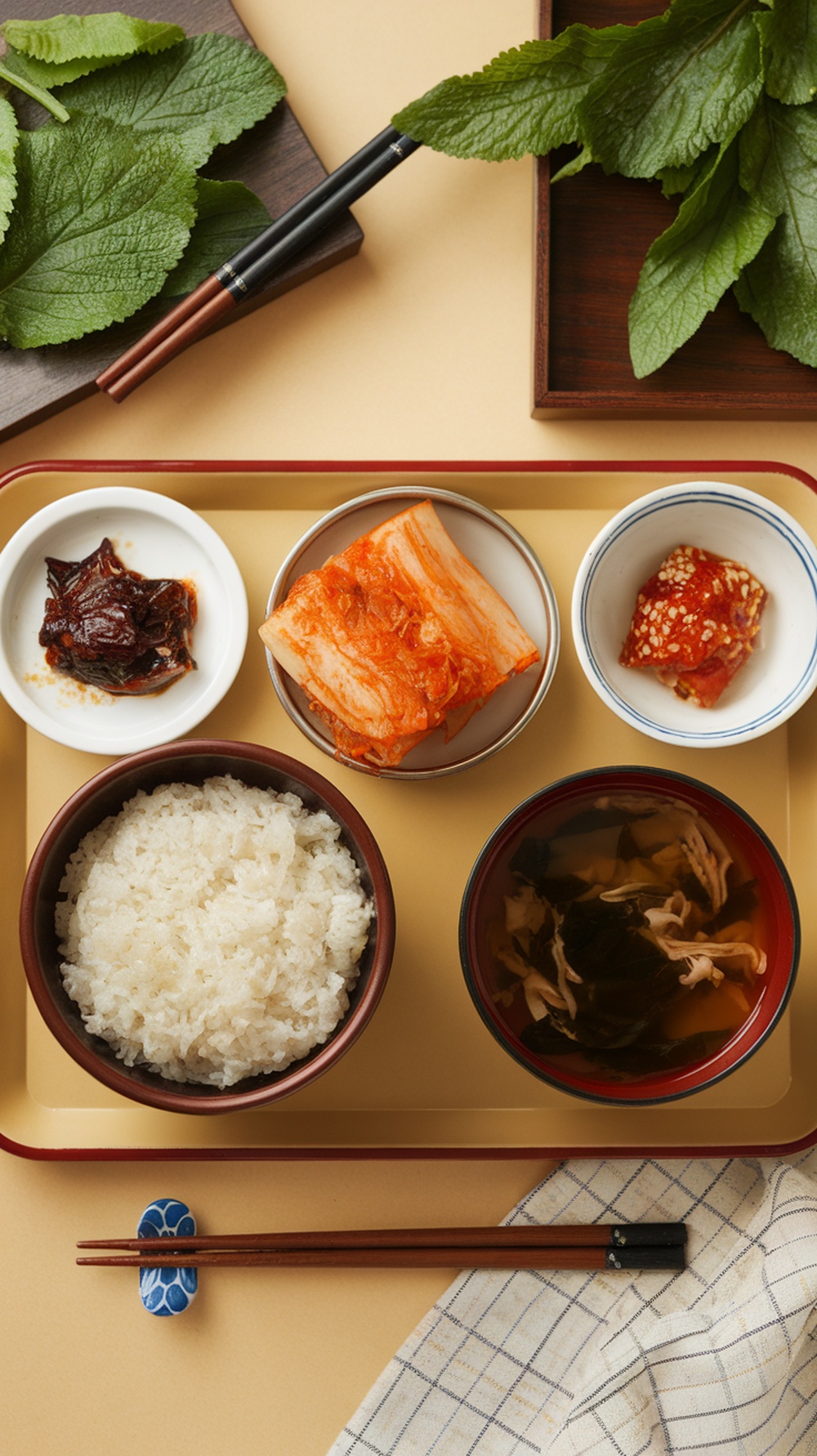
- Start small: Introduce healthy ingredients like kimchi or gochujang gradually.
- Mix and match: Combine fermented foods with grains for better digestion.
- Explore: Visit Korean markets for authentic ingredients.
Incorporating these superfoods from Korean cuisine into your meals can boost their nutritional value and introduce bold flavors and diverse culinary experiences into your kitchen. Enjoy exploring these delicious and healthy ingredients!